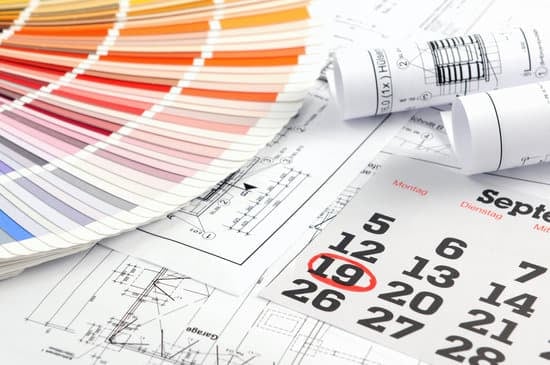Can you claim home insurance for home improvements? Home insurance serves as a safety net to protect homeowners from financial loss due to damage or loss of their property. This article will explore the coverage provided by home insurance, and specifically whether it extends to cover home improvements.
We will discuss the types of home improvements typically covered by home insurance, the importance of documentation and proof when making a claim, any limits or exclusions related to claiming home insurance for home improvements, and the process of making a claim with your insurance provider. Additionally, we will provide real-life examples of homeowners who successfully claimed home insurance for their home improvements, as well as tips for maximizing your own claim.
Home insurance is designed to provide financial protection to homeowners in the event that their property is damaged or destroyed. Typically, this includes coverage for events such as fires, theft, vandalism, and natural disasters. Additionally, liability coverage is often included in standard policies to protect homeowners in the event that someone is injured on their property. However, when it comes to making home improvements, many homeowners wonder if they can claim these expenses on their home insurance policy.
When it comes to claiming home insurance for home improvements, it’s important for homeowners to understand which types of improvements are typically covered by their policy. In addition to understanding what is covered, it’s also crucial to have proper documentation and proof of the improvements in order to make a successful claim with your insurance provider.
Throughout this article, we will explore these topics in detail and provide valuable insights for homeowners looking to navigate the often complex world of home insurance and home improvements.
Overview of Home Insurance
Home insurance is an essential part of being a homeowner, providing protection for your property and belongings in the event of unexpected events such as natural disasters, theft, or accidents. It is important to understand the types of coverage included in a standard home insurance policy so that you can make informed decisions about how to protect your home and possessions.
Types of Coverage
Standard home insurance policies typically include coverage for the structure of your home, personal belongings, liability protection, and additional living expenses. The structure coverage protects against damages to your home caused by covered perils such as fire, windstorm, or vandalism.
Personal belongings coverage extends to your furniture, clothing, and other items inside your home. Liability protection covers you in case someone is injured on your property, while additional living expenses coverage can help with costs if you have to temporarily move out of your home due to a covered loss.
What Is Typically Included
In addition to the basic coverages mentioned above, standard home insurance policies also typically include coverage for other structures on your property (such as a garage or shed), medical payments for guests who are injured on your property, and personal property replacement cost. It is important to carefully review the specifics of what is included in your policy and discuss any questions or concerns with your insurance provider.
When it comes to making improvements to your home that could potentially be covered by home insurance, documentation and proof become crucial factors. This includes keeping receipts from purchases related to the improvements as well as detailed records of any work done on the property.
In addition, photographs before and after the improvements can also serve as valuable evidence in case you need to make a claim. These documents can help support your claim should there be any dispute with the insurance company regarding reimbursement for the improvements.
It’s important to note that not all types of home improvements are covered by standard home insurance policies. Certain high-value additions or renovations may require additional endorsements or specific riders to provide adequate coverage.
Additionally, some policies may have limitations or exclusions when it comes to certain types of improvements such as luxury upgrades or cosmetic changes that do not directly impact the structural integrity or safety of the home. Understanding these limits and exclusions can help homeowners make more informed decisions when pursuing renovations or improvements with potential insurance implications.
Home Improvements Covered by Home Insurance
When it comes to making home improvements, many homeowners wonder if they can claim home insurance for these expenses. The good news is that in some cases, home insurance can cover certain types of home improvements. Understanding which types of home improvements are typically covered by home insurance can help homeowners make informed decisions when planning for renovations.
Types of Home Improvements Covered
Generally, home insurance can cover improvements that are made to protect the home and prevent future damage. For example, installing a new roof, updating electrical or plumbing systems, and adding storm shutters or impact-resistant windows are often covered by home insurance policies. These types of improvements are considered essential for maintaining the safety and integrity of the home, so they are usually eligible for coverage.
Exclusions and Limitations
It’s important to note that not all home improvements will be covered by home insurance. Cosmetic upgrades, such as installing new countertops or flooring, are typically not eligible for coverage. Additionally, any improvements that increase the value of the property may not be fully covered by a standard insurance policy. It’s crucial for homeowners to review their policy and understand its limitations before starting any major renovations.
Documentation and Proof
When making a claim for home improvements with your insurance provider, it’s important to have proper documentation and proof of the work that was done. This includes keeping receipts, contracts with contractors or vendors, before-and-after photos, and any permits or inspection reports related to the improvements. Having detailed documentation is crucial in proving the value and necessity of the improvements when filing a claim with your insurance provider.
Documentation and Proof
When it comes to making a claim for home improvements on your home insurance, having proper documentation and proof is crucial. Without the necessary evidence, you may find it challenging to convince your insurance provider to cover the cost of your home improvements. Here are some key points to keep in mind when documenting your home improvements for insurance purposes:
- Keep receipts and invoices: Whenever you make a home improvement, whether it’s a small repair or a major renovation, be sure to keep all receipts and invoices related to the work done. These documents serve as proof of the cost of the improvement and can support your claim.
- Take before and after photos: Visual evidence can be extremely powerful when making an insurance claim for home improvements. Take photos of the area before the work begins and once it’s completed. This can help demonstrate the scope of the improvement and its impact on your property.
- Obtain permits and inspection reports: For significant renovations or additions to your home, obtaining permits and inspection reports from local authorities can further validate the legitimacy of your home improvements. These official documents can add credibility to your claim.
Proper documentation not only supports your claim but also provides a clear record of the work done on your property. In the event that you need to make a claim for home improvements, having detailed documentation can streamline the process and increase the likelihood of a successful outcome.
It’s important to note that some insurance providers may have specific requirements regarding documentation for home improvements. Be sure to review your policy carefully and understand what is expected in terms of proof when making a claim for home improvements with your insurance provider. By staying organized and diligent about documenting your home improvements, you can position yourself for success when making a claim on your home insurance policy.
Limits and Exclusions
When it comes to making a claim on your home insurance for home improvements, it’s important to be aware of any limits or exclusions that may apply. While home insurance can provide coverage for certain types of home improvements, there are often limitations on what is included in a standard policy. Understanding these limits and exclusions can help you avoid any unexpected surprises when it comes time to make a claim.
One common limitation when it comes to claiming home insurance for home improvements is the age and condition of the property. Some insurance providers may have restrictions on covering older homes or properties in poor condition. This means that if you’ve made improvements to an older or deteriorating property, you may not be able to claim those upgrades under your standard home insurance policy.
Additionally, certain types of home improvements may also be subject to exclusions from coverage. For example, if you’ve added a swimming pool, converted your garage into a living space, or made extensive structural changes to your property, these modifications may not be automatically covered by your existing home insurance policy. It’s important to review your policy and speak with your insurance provider to understand what specific improvements are excluded from coverage.
Understanding the limits and exclusions related to claiming home insurance for home improvements can help you make informed decisions about which upgrades to prioritize and how best to protect your investment in your property. By being aware of these factors, you can take proactive steps to ensure that you have the appropriate coverage in place for all of your home improvement projects.
Steps to Making a Claim
When it comes to making a claim for home improvements with your insurance provider, there are a few important steps that you need to follow in order to ensure a smooth and successful process. The first step is to review your home insurance policy and determine what types of home improvements are covered. This will give you a clear understanding of what you can potentially claim for and what may be excluded from coverage.
Once you have identified the home improvements that are covered by your policy, the next step is to gather all necessary documentation and proof of the work that was done. This can include receipts, invoices, before and after photos, and any other relevant documentation that supports the home improvements. Having thorough documentation will help strengthen your claim and increase the likelihood of approval from your insurance provider.
After you have gathered all necessary documentation, you will need to contact your insurance provider to initiate the claims process. It’s important to provide all relevant information and documentation when filing your claim, as this will help expedite the review process. Your insurance provider may also send an adjuster to assess the home improvements and determine the extent of coverage based on their findings.
It’s important to note that while some home improvements may be covered by home insurance, there may be limits or exclusions depending on your specific policy. For example, certain high-value or luxury upgrades may not be fully covered under a standard home insurance policy. It’s always advisable to review your policy details carefully or consult with your insurance agent to fully understand any limitations or exclusions related to claiming home insurance for home improvements.
| Steps | Description |
|---|---|
| Review Policy | Determine which home improvements are covered by reviewing your home insurance policy. |
| Gather Documentation | Collect receipts, invoices, photos, and other proof of the home improvements. |
| Contact Insurance Provider | Initiate the claims process by providing all relevant information and documentation. |
Case Studies
Home insurance is designed to protect homeowners’ properties and belongings in the event of unexpected damage or loss. However, many homeowners may wonder if they can claim home insurance for home improvements. The answer to this question depends on a few factors, such as the type of improvement made and the specific coverage of your policy.
While home insurance typically covers damage caused by perils such as fire, theft, or vandalism, it may also cover certain home improvements. For example, if you install a new security system, replace a damaged roof, or upgrade your plumbing or electrical systems, these improvements may be covered by your home insurance policy. It’s important to review your policy and discuss any planned improvements with your insurance provider to understand what is and isn’t covered.
One real-life example of a successful home insurance claim for a home improvement is when a homeowner experienced water damage due to a faulty plumbing system. The homeowner had recently upgraded the plumbing in their home, and because this improvement was directly related to the cause of the damage, their insurance provider covered the cost of repairs. This highlights the importance of proper documentation and proof of home improvements when making a claim.
In another case, a homeowner made substantial renovations to their kitchen, including installing high-end appliances and custom cabinetry. When a fire broke out due to an electrical issue in the kitchen, the homeowner was able to successfully claim their home insurance for the cost of repairing and replacing these improvements. This emphasizes that even major renovations can be covered by home insurance if they are related to an insurable event.
| Home Improvement Example | Outcome |
|---|---|
| Upgraded Plumbing System | Successful Claim for Water Damage |
| Kitchen Renovations | Successful Claim for Fire Damage |
Tips for Maximizing Your Claim
When it comes to home improvements, it’s important to understand how your home insurance policy can provide coverage for these upgrades. Here are some tips and advice for homeowners looking to maximize their chances of successfully claiming home insurance for their home improvements:
Document Your Home Improvements
It is crucial to keep thorough documentation of all the home improvements you make. This can include receipts, invoices, contracts with contractors, before and after photos, and any other relevant paperwork. Having proper documentation can help support your claim and establish the value of the improvements you have made.
Understand Your Policy Coverage
Before starting any home improvement project, it’s important to review your home insurance policy and understand what is covered. Some policies may have specific limitations or exclusions for certain types of improvements, so make sure to clarify this with your insurance provider if needed.
Communicate With Your Insurance Provider
If you are planning on making significant home improvements, consider contacting your insurance provider beforehand to discuss how these renovations may affect your policy coverage. Open communication with your provider can help prevent any surprises when it comes time to make a claim for your home improvements.
By following these tips and staying proactive in understanding your policy coverage and documenting your home improvements, you can increase the likelihood of successfully claiming home insurance for the improvements made to your property. Keep in mind that every policy may have different terms and conditions, so it’s always best to seek guidance from your insurance provider as needed.
Conclusion
In conclusion, home insurance can provide coverage for certain home improvements, depending on the specifics of your policy and the nature of the improvements. It is important for homeowners to understand the types of coverage included in their policy, as well as any limits or exclusions related to claiming home insurance for home improvements.
By carefully documenting and providing proof of the improvements, homeowners can increase their chances of successfully making a claim with their insurance provider. Additionally, by following the proper steps for making a claim and seeking guidance from professionals when necessary, homeowners can maximize their chances of receiving coverage for their home improvements.
It is crucial for homeowners to review their insurance policy and understand what is covered before embarking on any major home improvement projects. Consulting with an insurance agent to discuss coverage options and potential additions to the policy can provide peace of mind and ensure that any future renovations or upgrades are adequately protected. Taking proactive steps can also help in minimizing potential disputes when trying to make a claim for home improvements through home insurance.
Ultimately, while not all home improvements may be covered by standard home insurance policies, it is possible to receive coverage for certain upgrades or renovations. Homeowners should familiarize themselves with their policy details, maintain thorough documentation of any work done on the property, and seek professional guidance when needed. By doing so, they can navigate the claims process effectively and potentially receive financial assistance for their efforts in improving and maintaining their homes.
Frequently Asked Questions
Can I Deduct Homeowners Insurance on My Taxes?
Homeowners insurance premiums are generally not tax-deductible for most homeowners. However, there are some exceptions, such as if a portion of your home is used for business purposes or if it is a rental property.
Does Home Insurance Cover a Rotting Deck?
Whether home insurance covers a rotting deck depends on the cause of the rot and your specific policy. If the rot is due to normal wear and tear, it may not be covered. However, if it’s due to a covered peril, like a storm or fire, it may be included.
Will a New HVAC System Lower My Homeowners Insurance?
Installing a new HVAC system may lower your homeowners insurance in some cases. This is because updated systems can reduce the risk of fire or water damage. It’s important to check with your insurance provider to see if they offer any discounts for having a new HVAC system in place.

I’m thrilled to have you here as a part of the Remodeling Top community. This is where my journey as an architect and remodeling enthusiast intersects with your passion for transforming houses into dream homes.





